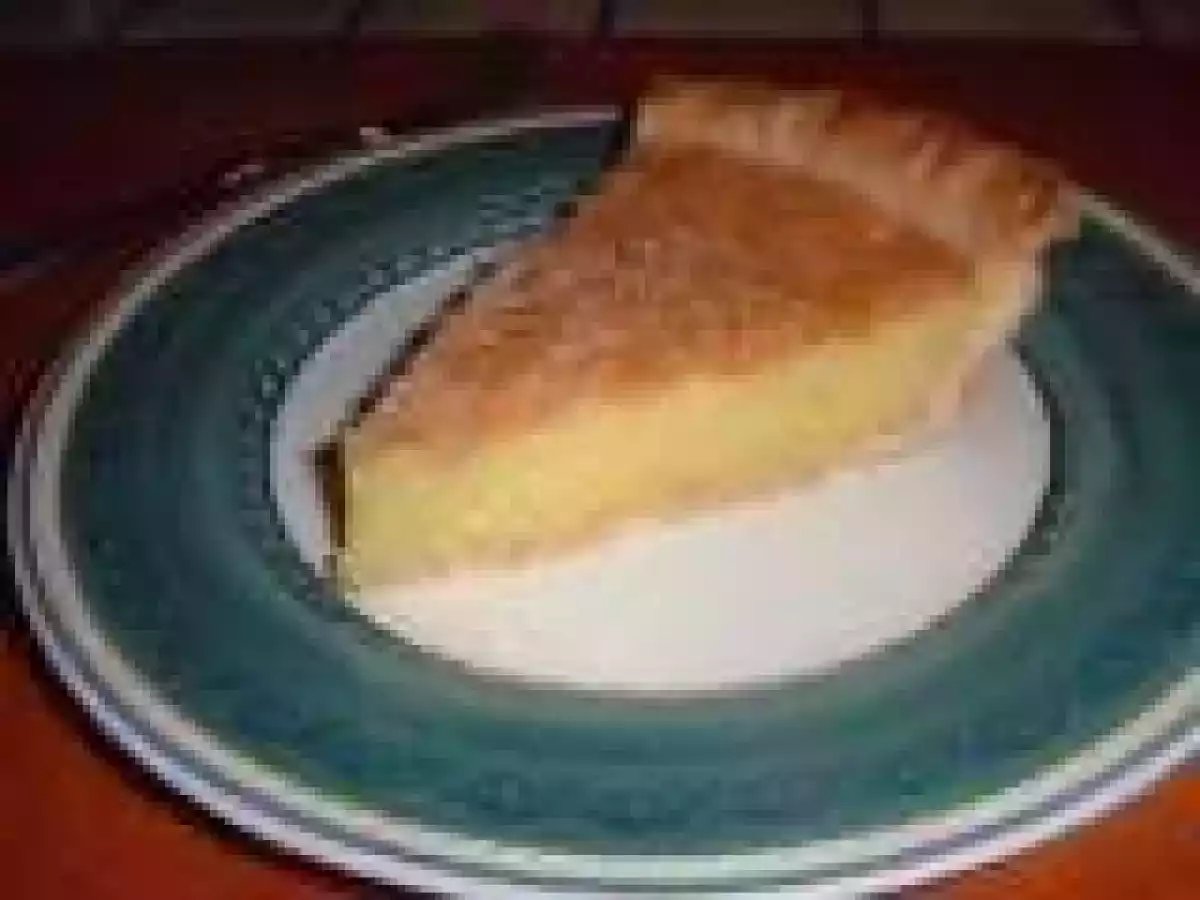Lemon Chess Pie from Cook's Country, April/May 2010

Another arena that contains a separate vocabulary is that of cooking. Not only are terms different (barbecue vs. grilling), but there is a host of wonderful dishes that I had never heard of, let alone tasted, originating down here. There are the items we all know, like grits and greens, but I had never heard of hummingbird cake or chitlins (shudder) or chess pie.
The first time I learned of chess pie I honestly expected that it was one of those black and white type desserts in a checkerboard pattern. It makes sense, no? I was surprised to see that it was more of a custard-type pie and that it was a general name with a more specific descriptor tacked on depending on the variety of chess pie made. For instance, as in this recipe, Lemon Chess Pie.
As far as where the name comes from, no one really knows. The Cook's Country magazine gives three options, including the fact that it might have been called a "cheese pie" due to their texture at one point, or that it used to be stored in a pie chest, or that it originated in Chester, England. There's also speculation that it was originally called "just pie," which then got slurred to "juss pie" then "jess pie," and finally chess pie. Hearing how our four year-old has gone from saying "my" to saying "mah" in the short time she's been in a preschool with her wonderful southern teachers, that speculation makes total sense to me.
It seems funny to me that American Test Kitchens chose chess pie as a recipe to "perfect" considering that these pies have been made since the 1800s. I would think that 200 years of pie-making would perfect a recipe all by itself. Since I've never made a chess pie before I won't be able to compare this recipe to anything, but to judge it on its own merits, which is fine.
I used the pie crust recipe from the "extra" area of the magazine. It's a Single Pie Crust Dough that is simple to make since it uses the food processor and requires little handling of the dough, which should keep it flaky. While the pie making goes quickly, the crust required an hour or more chilling, so start that part of it early in the day since the pie will need at least 4 hours too chill as well.
The ingredients for the filling were simple and easy to whisk together in the pan and then pour into the semi-cooked pie shell. Unfortunately, I had to run out as soon as the pie was in the oven so I left my husband very clear instructions to remove the pie after the designated amount of time, sprinkle it with sugar, per the instructions, and let it cool on a rack. To all the women out there shaking their heads; I know, I know.
Luckily, he was only a couple of minutes late, but even so, since this pie contains so much sugar, I think those few minutes made the top crust that develops from the cornmeal rising while it cooks just a little too brown.
Even with that small snafu, this pie is excellent. Both my father and husband had two pieces. It has a unique texture; not silky like the custard in a lemon meringue pie, but more substantial.
I was less impressed with the pie crust. I didn't find it to be at all flaky, but in fact was quite tough and more like a biscuit. It has good flavor, but to me, a pie crust is supposed to flake, not require a knife to cut through.
I will definitely make this, and other types of chess pie, again, but with my own crust.
Taking On Magazines One Recipe at a Time
Comments
Another Karen
No recipe, or even link to a recipe. :(
Karen
Am I missing something? Where is the recipe?